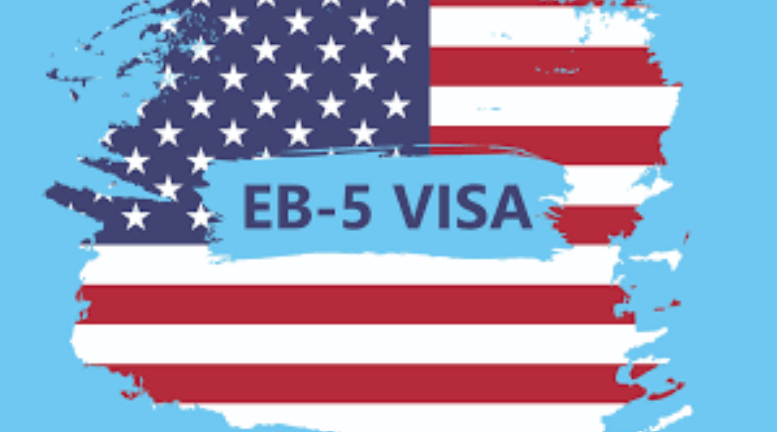Explorando los Visados de Visitante B1 y B2: Su puerta de entrada a los negocios y el turismo en Estados Unidos
Kris Quadros-Ragar • October 10, 2024
Click here to read this article in English
Estados Unidos es desde hace mucho tiempo un destino privilegiado tanto para viajes de negocios como de placer. Cada año, miles de personas de todo el mundo visitan Estados Unidos por motivos de corta duración, como reuniones de negocios o vacaciones. Para ello, los extranjeros deben obtener un visado de no inmigrante, siendo el visado B1/B2 uno de los más utilizados para visitas temporales.
El visado B1/B2 permite a las personas entrar en Estados Unidos con fines específicos, ya sea para actividades relacionadas con los negocios o para explorar las atracciones turísticas del país. Aunque ambos visados pertenecen a la misma categoría, tienen finalidades distintas según la naturaleza de la visita.
El visado B1/B2, expedido por el Departamento de Estado de Estados Unidos, es un visado de doble propósito que permite a los no inmigrantes entrar temporalmente en Estados Unidos por negocios (B1) o por turismo y otras actividades no empresariales (B2). Este visado combinado ofrece flexibilidad, ya que permite a los viajeros ocuparse tanto de asuntos de negocios como de ocio en un mismo viaje.
El visado B1
está destinado a quienes visitan Estados Unidos por motivos de negocios. Es importante tener en cuenta que el visado B1 no permite trabajar ni gestionar un negocio en Estados Unidos:
- Consultar con socios comerciales.
- Negociar contratos o cerrar acuerdos.
- Asistir a conferencias, convenciones o seminarios en campos como la educación, la ciencia y el comercio.
En resumen, el visado B1 está destinado a personas que realizan actividades empresariales esenciales durante su estancia temporal, sin buscar empleo en Estados Unidos.
El visado B2, por su parte, está diseñado para personas que visitan Estados Unidos con fines no comerciales, como:
- Turismo o vacaciones.
- Visita a amigos o familiares.
- Recibir tratamiento médico.
Este visado también permite participar en otras actividades no empresariales, como actos sociales o cursos recreativos de corta duración.
Una vez concedidos, tanto los visados B1 como los B2 suelen permitir estancias de hasta seis meses. La duración exacta de su estancia la determinan los funcionarios del Servicio de Aduanas y Protección de Fronteras de Estados Unidos (CBP) en el momento de su entrada, en función del propósito de su visita y de las condiciones de su visado.
Tanto si visita Estados Unidos para explorar oportunidades de negocio como para disfrutar de las numerosas atracciones turísticas del país, el visado B1/B2 ofrece una opción flexible para estancias de corta duración. Si conoce los requisitos y las diferencias entre estos visados, podrá gestionar mejor el proceso de solicitud y aprovechar al máximo su viaje a Estados Unidos.
Este blog no pretende ser asesoramiento jurídico y nada de lo aquí expuesto debe interpretarse como el establecimiento de una relación abogado-cliente. Por favor, programe una consulta con un abogado de inmigración antes de actuar sobre cualquier información leída aquí.
Kris Quadros-Ragar
Similar Posts

Embarking on the EB-5 immigration journey is both a profound personal endeavor and a strategic investment decision. For individuals seeking to make the United States their new home while contributing to its economic landscape, the EB-5 Immigrant Investor Program offers a pathway unlike any other. This program, established by the U.S. government in 1990, provides foreign investors with the opportunity to obtain permanent residency in the United States by investing in job-creating enterprises . However, navigating the complexities of the EB-5 process requires a thorough understanding of its intricacies, requirements, and potential pitfalls. In this guide, we provide a brief overview of the steps and documents involved in the EB-5 immigration process, shedding light on its key components, eligibility criteria, investment options, and procedural steps, empowering prospective investors with the knowledge needed to embark on this transformative journey with confidence. Before selecting a project and making the investment, it is important for an EB-5 investor to meet with an immigration attorney to strategize for the application. It is required to show the Immigration Service that all funds used in the investment were lawfully earned and retained , so your attorney will want to understand where the money for the investment is coming from and where it has been held since it was earned. Once satisfied with the source and tracing of funds, the investor can select a project to invest in. Following the passage of the EB-5 Reform & Integrity Act, certain investment projects have already been pre-approved by USCIS by filing form I-956 and receiving designation as a Regional Investment Center. The required minimum investment is $1,050,000 by default; however, this amount is reduced for investment centers in “Targeted Employment Areas” to $800,000 . After submitting the investment to the regional center, the investor will then work with their attorney to create the I-526 petition. At this stage of the case, it is time to show USCIS the source and tracing of all of the funds used for the investment. The types documentation required in order to show the lawful source and tracing of funds is extremely broad and highly dependent on where the money is coming from in each particular case, but the most common documents include W-2 or 1099 tax forms, federal and state tax returns, bank account statements, purchase and sale contracts from the sale of real estate, stock certificates, loan contracts, inheritance documents, and wire transfer records, among many other possibilities . EB-5 applicants can either process their green cards through USCIS by filing an I-485 application for Adjustment of Status, or process through the consulate in their home country . If already in the United States on another valid status, the Adjustment of Status application can be submitted concurrently with the I-526 petition. If processing through a consulate overseas, the investor will have to wait until the I-526 is approved before beginning the consular process. The primary applicant, along with a spouse and any unmarried children under 21 years of age are able to receive permanent residency through the EB-5 process. At the completion of either process, whether requesting the Green Card within the United States or seeking entry through a consulate, USCIS will issue conditional green cards, with a validity of two years . Within the last three months before the conditional green card expires , the investor and family will need to file an I-829 application for removal of conditions on the green card. At this stage, nearly two years after the investment has been made, the Immigration Service is confirming whether the investment remains in the project and the requisite 10 jobs have been created . Following I-829 approval, the investor and their family will receive permanent green cards, with a 10-year validity. The investor and family will be able to apply for United States Citizenship five years after the initial green card is issued . The conditional green card does count for this purpose, so citizenship will become a possibility approximately 3 years after the permanent green cards are issued. In conclusion, the EB-5 Immigrant Investor Program stands as a unique avenue for individuals around the globe to fulfill their aspirations of living and thriving in the United States. Through strategic investment and dedication to job creation, participants not only secure permanent residency but also contribute to the nation's economic growth and prosperity. However, it is crucial for prospective investors to approach the EB-5 process with meticulous planning, thorough research, and expert guidance to navigate its complexities successfully . By understanding the program's requirements, exploring investment options, and adhering to procedural guidelines, aspiring immigrants can embark on their EB-5 journey with clarity and confidence. Ultimately, the EB-5 program represents more than just a pathway to residency—it embodies the spirit of entrepreneurship, innovation, and opportunity that defines the American dream. If you believe you may qualify for the EB-5 program or if you have any questions, please schedule a consultation with one of our experienced attorneys and we will be more than happy to assist you.

Entrepreneurs and investors are key drivers of economic growth and job creation, and the United States has long been a destination of choice for those seeking to start or grow their businesses. However, navigating the U.S. immigration system can be complex and time-consuming. In this article, we will discuss the various non-immigrant visa options available to entrepreneurs and investors looking to enter the United States. L-1 Intracompany Transferee Visa The L-1 Intracompany Transferee Visa is a visa category specifically designed for executives, managers, and employees possessing specialized knowledge who are relocating from a foreign corporation to a U.S. affiliate. The eligibility for an L-1 visa requires the foreign corporation and the U.S. affiliate to be connected through common ownership or control. Transferees must also demonstrate that they have been employed abroad for at least 12 months in an executive, managerial, and specialized knowledge capacity. An employee being relocated might also be heading to the United States to set up an office if the company doesn't have an existing presence there. The L-1 visa isn't the best choice for someone in the early stages of launching a company, particularly if the business is being established in the United States. However, it could be a viable option for an entrepreneur who has, for instance, kick-started a business outside of the United States which will maintain its operations, or if the entrepreneur merges operations with a foreign company where they have previously been employed. E-1 Treaty Trader Visa E-1 Treaty Trader Visa category is designated for nationals of countries with which the U.S. maintains treaties of commerce and navigation. An entrepreneur qualifying for an E-1 visa must be entering the U.S. to carry out substantial trade, including trade in services or technology, principally between the U.S. and the treaty country. Trade, as defined, must involve an exchange of goods, money, or services. Virtually any goods or services can meet this requirement. The transaction flow between the two countries should be verifiable, typically done through documents such as purchase orders, wire transfers, or bills of lading. To determine the substantiality of the trade, the Department of State (DOS) will assess the frequency and monetary value of the transactions. More regular, high-value transactions are given greater consideration. However, smaller businesses can also qualify if they can demonstrate that the transaction volume is sufficient to support the treaty trader(s) and their family. The DOS applies a general rule stating that at least 50% of the trade must be between the United States and the treaty country. Thus, applicants should provide evidence of their total business transactions and proof that a minimum of 50% is between the two countries. The remaining trade can be domestic or international with other countries. Even if a US-based subsidiary meets the 50% requirement, the parent company abroad does not necessarily need to conduct 50% of its trade with the United States. Due to the requirement of demonstrating substantial trade history, it may be challenging for early-stage startups to qualify for an E-1. This visa type is more frequently used by established entrepreneurs with a foreign business and a US customer base, who wish to continue their operations in the US. In some instances, foreign firms aiming to penetrate the US market may use an E-1 for a newly established US subsidiary and start moving inventory for sale in the US. In this case, all trade may be between the foreign parent and US subsidiary, thereby comfortably meeting the 50% threshold. E-2 Treaty Investor Visa E-2 Treaty Investor Visa is for citizens of countries that have a treaty of commerce and navigation with the United States. To qualify for an E-2 visa, an entrepreneur must be coming to the United States to develop and direct the operations of a business in which they have invested, or are in the process of investing, a substantial amount of capital. In the classic example of an E-2 investment, the E-2 investor transfers their personal wealth from a foreign bank account into the bank account of their new US enterprise, thereby establishing their investment. However, the Foreign Affairs Manual (FAM) provides some flexibility, enabling the officer to consider other "arrangements" as an "investment." For those not intending to finance the E-2 enterprise entirely or partially with their personal funds, the nationality of other investors needs to be considered to ensure that at least 50% of the company shares remain in the hands of nationals from the E-2 treaty country. For instance, suppose one co-founder is American and the other is French, and they each own 50% of the company, contributing $40,000 from their personal wealth as initial capital for the company. To raise additional funds, they each decide to swap 7% of their equity (14% in total) with an angel investor for $150,000. If the angel investor is also French, then 57% of the company is now owned by French nationals; but if the angel is a U.S. citizen, then only 43% of the company is French, and it no longer qualifies as a French company for E-2 purposes. In this scenario, the founders will need to switch to another visa type before the equity exchange, as their E-2 will no longer be valid when the company loses its treaty nationality. A central concern for every E-2 application is the "source of funds." The applicant must clearly demonstrate the lawful origin of their investment funds, along with evidence of ownership and control. Moreover, to be classified as an E-2 investment, the invested assets or funds must be "at risk." This means that if the business fails, the investment is proportionately lost. Though the investment capital may be loan-based, the loan cannot be secured against the assets of the E-2 enterprise. Personal loans, which may be secured by personal assets like a second mortgage or unsecured loans typically obtained from family, friends, or business partners, are permissible. O-1 Visa The O-1 visa category is a unique and advantageous option for startup entrepreneurs and business owners who have demonstrated exceptional prowess in their field. The O-1A visa variant specifically caters to individuals exhibiting extraordinary ability in the sciences, education, business, or athletics. This makes it a viable avenue for those looking to establish or expand their business ventures in the US without the necessity of maintaining an overseas office or providing evidence of trade and investment, as required by L-1 and E-1/E-2 visas. Unlike the more traditional visa categories, the O-1A visa shifts the emphasis onto the beneficiary's individual achievements within their domain. It demands that the beneficiary meets at least three of the eight regulatory criteria set forth by the US Immigration Services. These criteria form a comprehensive measure of the individual's accomplishments, recognition, and overall standing in their respective field. For instance, if the beneficiary has been the recipient of nationally or internationally recognized prizes or awards, it highlights their excellence and industry-leading competence. Alternatively, membership in prestigious associations which require commendable achievements as judged by recognized experts can also serve as evidence of their extraordinary ability. The O-1 visa offers an alternate route that places an emphasis on individual expertise and recognition in the applicant's field, rather than specific trade or investment quotas. This visa is especially beneficial for those who have demonstrated exceptional capability and achieved a high degree of success in their respective business domain. Overall, the O-1A visa offers an effective immigration route for extraordinarily talented entrepreneurs and business owners. By meeting and surpassing the eligibility criteria, they can gain access to the vast opportunities in the US market, thereby furthering their business ventures and contributing to the economic growth and diversification of the US. Conclusion For foreign entrepreneurs and investors, several U.S. immigration options are available: the E-1 treaty trader visa, the E-2 treaty investor visa, the L-1 intra-company transferee visa, and the O-1 visa for individuals with extraordinary ability. While E-1 and E-2 visas center on trade and investment respectively, the L-1 is for managers or executives transferring to a U.S. branch of their company, and the O-1 visa acknowledges individual expertise and accomplishments. Each visa has unique prerequisites, necessitating the guidance of an immigration attorney for optimal strategy selection. Correct navigation of these options opens vast U.S. entrepreneurial opportunities and resources.

There are several types of visas that allow you to come to the United States and work. Employment-based visas will give you the opportunity to live and work in the U.S. Your education, skills, and experience are some of the things used to determine who is eligible for an employment-based visa. One “EB” visa many people qualify for is an EB-3 visa.

In recent months, the U.S. government has intensified its vetting procedures for individuals seeking entry into the United States, whether through visa applications abroad or inspection at ports of entry. This shift, prioritized by the current administration, is having a noticeable impact on immigrants, visa holders, and even lawful permanent residents (LPRs). At U.S. consulates worldwide, applicants are experiencing increased delays , often being placed into administrative processing under Section 221(g) or referred for Security Advisory Opinions (SAOs) , which can significantly prolong visa issuance. Officers are now engaging in deeper reviews of applicants' backgrounds, including their t ravel histories, social media accounts, and foreign ties . This scrutiny applies to a wide range of visa categories, from visitor visas to employment-based petitions. Importantly, officers are exercising broader discretion when deciding who qualifies for a visa, making the process more unpredictable, even for applicants with strong cases. This enhanced vetting does not end at the consulate. Individuals entering the U.S. — even those with valid visas or green cards — are increasingly subject to prolonged secondary inspections by Customs and Border Protection (CBP). Officers may ask detailed questions about prior immigration history, travel patterns, and social media activity. In some cases, travelers are asked to provide access to their electronic devices for further inspection. There are also growing reports of travelers being referred to deferred inspection or even issued a Notice to Appear (NTA) for removal proceedings, despite previously lawful entries. While some of these practices have existed in the past, the current administration has formalized and expanded them. Experts warn that additional travel restrictions or targeted bans could also emerge as part of the administration’s enforcement priorities. For employment-based applicants, these delays and complications can severely impact U.S. businesses and foreign nationals who contribute critical skills to the U.S. economy. It is more important than ever to be well-prepared before attending a visa interview or traveling internationally. Understanding your rights and preparing thoroughly can help you navigate this uncertain landscape. At Santos Lloyd Law Firm, P.C. , our immigration attorneys are ready to guide you through this evolving process and ensure you are informed, supported, and protected. Please contact us if you have questions or need assistance.

On March 31, 2024, U.S. Citizenship and Immigration Services (USCIS) implemented a policy update that limits gender marker selections on all immigration forms and systems to two biological sexes: male and female. This change eliminates the option for applicants to select a non-binary or “X” gender marker—an option that had previously been permitted on some forms. While USCIS emphasizes that this update does not change who qualifies for immigration benefits, it may significantly impact how certain applications—particularly asylum claims based on gender identity-related persecution—are understood and evaluated. What Has Changed? Under the revised policy, applicants may now only choose “Male” or “Female” when completing USCIS forms. The ability to select a non-binary or third-gender option is no longer available. Applicants may still request to change their gender marker with USCIS, but only within the male/female binary. Supporting documentation, such as medical or legal records, is not required to make the change. This means that transgender individuals can still align their gender marker with their identity—if it falls within the two binary categories—but non-binary individuals are no longer represented. The change follows guidance issued by the federal Office of Management and Budget (OMB), which called for greater consistency in the collection of sex and gender data across federal agencies. Impact on Asylum Applicants This policy update is especially important for individuals applying for asylum based on persecution related to their gender identity. Under U.S. immigration law, asylum is available to people who have suffered persecution—or fear future persecution—based on their membership in a “particular social group.” This includes people targeted for being transgender, gender non-conforming, or otherwise not aligning with socially expected gender roles in their home country. Although the legal standard for asylum remains unchanged, the removal of the non-binary gender marker could make it harder for some applicants to clearly present and document their identity. In asylum cases, credibility and clarity are crucial. The ability to accurately reflect one’s gender identity on official forms can play an important role in establishing the foundation of a persecution claim. Now, applicants who identify as non-binary or outside the traditional male/female categories may be forced to select a gender that does not align with their lived experience. This could lead to confusion in their case file or require additional explanation during interviews or hearings. This policy could weaken the strength of some asylum claims—not because the underlying facts have changed, but because the official forms now fail to reflect the applicant’s true identity. For example: A non-binary person applying for asylum after being targeted in their home country may now have to select “Male” or “Female” on their asylum application, despite not identifying as either. This mismatch may lead adjudicators to question the applicant’s identity, possibly weakening the strength of the claim or requiring added clarification and documentation. In defensive asylum cases—where applicants are in removal proceedings—such inconsistencies could create unnecessary hurdles and complicate the evidentiary presentation. What Can Applicants Do? Despite the change, individuals can still pursue asylum based on gender identity. The underlying eligibility criteria remain the same. However, applicants should be prepared to clearly explain any differences between their stated identity and the gender marker required on USCIS forms. Applicants are encouraged to: Include a personal declaration explaining their gender identity in detail and how it relates to their fear of persecution. Provide evidence such as affidavits, country condition reports, or expert testimony that supports the claim. Work with an experienced immigration attorney who can help present the claim effectively and prepare for any questions that might arise from the new form limitations. The new USCIS policy on gender markers may seem like a technical update, but for asylum seekers fleeing gender-based persecution, it has real implications. While individuals are still legally eligible to seek protection, the limitation to binary gender options could make it more difficult to fully and clearly present their case. If you or someone you know is facing immigration challenges related to gender identity—or is concerned about how this policy may impact an asylum claim—please contact Santos Lloyd Law Firm to schedule a consultation with one of our experienced immigration attorneys. We’re here to help ensure your voice is heard and your case is handled with the care and expertise it deserves.

In 2025, the immigration landscape continues to shift under the weight of national security concerns, ushered in by Executive Order “ Protecting the United States From Foreign Terrorists and Other National Security and Public Safety Threats. ” This directive tasks federal agencies—including the U.S. Department of State—with implementing enhanced screening and vetting protocols for all foreign nationals seeking visas or other immigration benefits. The result? A dramatically intensified vetting process, along with mounting concerns from immigrants, attorneys, and civil liberties advocates alike. Traditionally, airport security focused on verifying travel documents and screening for prohibited items, while consular officers assessed the legitimacy of visa petitions and the admissibility of applicants. Extreme vetting, however, represents a significant shift toward a far more invasive and comprehensive investigative process. It now includes detailed background checks, biometric verification, digital forensics, and expansive scrutiny of an applicant’s online presence and criminal or financial records. Since President Trump’s second term began in January 2025, the implementation of extreme vetting has expanded rapidly. Today, border screenings go far beyond routine document checks, encompassing a full-scale evaluation of a traveler’s digital life. This pivot reflects the administration’s intensified focus on national security, but it has also triggered urgent discussions about privacy, due process, and the fairness of modern immigration enforcement. At U.S. ports of entry—especially airports—noncitizens are now subject to rigorous and invasive procedures, including: Inspection of cell phones, laptops, and other devices (including deleted content) Review of social media activity on platforms like TikTok, Instagram, and X (formerly Twitter) Biometric scanning, including fingerprinting and facial recognition These measures are no longer confined to travelers from high-risk countries. In practice, extreme vetting applies broadly across all nationalities, and increasingly affects lawful permanent residents as well. For noncitizens, this new landscape introduces a heightened level of uncertainty and vulnerability. Delays at U.S. consulates for visa issuance or renewal are becoming routine. Travelers must now be acutely aware of these changes, and those attending consular interviews or seeking visa renewals should be prepared to provide additional documentation verifying their maintenance of status, compliance with visa conditions, and the bona fide nature of their visa applications. It is critical to organize supporting materials in advance and be ready to answer questions about employment, education, travel history, and online activity. As the U.S. government continues to expand its use of data-driven risk assessment tools, travelers must adapt to a new normal, one where preparation is essential to navigating the immigration system without disruption.




